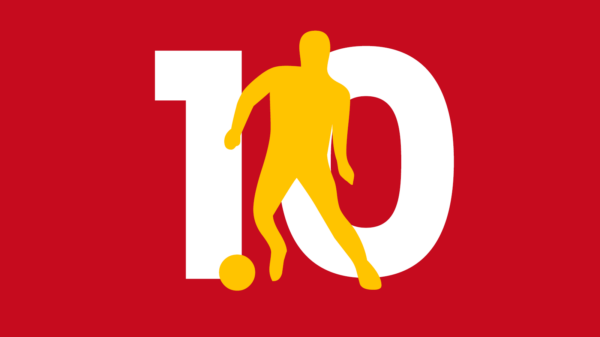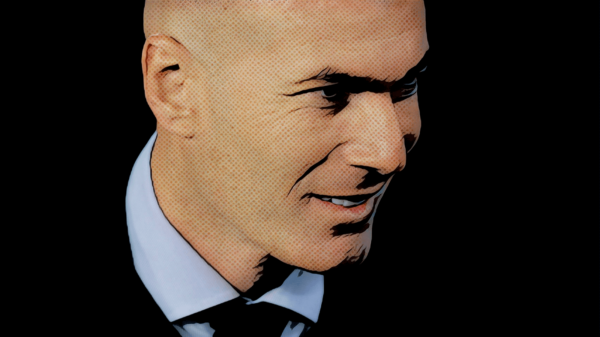One sad story of unfulfilled potential is that of Rafael van der Vaart. The elegant Dutchman has had a tough career for various reasons, and now finds himself at Real Betis. Finley Crebolder looks at how he will fit into Pepe Mel’s plans.

In 2007, Rafael Van der Vaart signed for Real Madrid as a promising and exciting young talent destined to be one of the best in the world. Eight years later, and Van der Vaart has joined the same league in very different circumstances. He is no longer a truly world-class player signing for a European superpower with the world at his feet, but instead a 32 year old who has lost hope of fulfilling the huge potential he once showed. A combination of injuries, personal spats, manager preferences and the fact that he’s had to compete directly with a certain Wesley Sneijder for a starting spot in three of the sides he’s played for has meant that Van der Vaart has never truly lived up to his potential, despite a very successful stint at Tottenham Hotspur in the Premier League. It seems fitting that a player who was always never quite good enough to be considered one of the best in the world enjoyed his best years at a club that suffers the same problem. However, at the age of 32, the Dutchman has decided not to effectively hand in an early retirement by accepting offers from the MLS or move back to his childhood club Ajax, but has instead moved back to the nation of his grandparents, joining Real Betis, but can he succeed in his career swansong?
His first spell in Spain
This is the second time in his career that Van der Vaart has moved from the Bundesliga to La Liga, and although he comes to Spain in different circumstances this time, looking at his first stint in the league can be helpful in predicting how well he can do this time. His time at Real Madrid is often considered a failure, but in actual fact, he did relatively well at a club that is hugely difficult to succeed at. He joined the club from Hamburg at the end of the 2007/08 season, as part of a Dutch revolution at the club which also included Arjen Robben, Ruud Van Nistelrooy and Van der Vaart’s former Ajax teammate Wesley Sneijder joining at the start of the season. His first season at the club got off to a great start, with Van der Vaart scoring on his league debut against CD Numancia before scoring a hat trick against Sporting Gijon. In October of that season, he was nominated for the Ballon D’or. Towards the second half of the season, he struggled to get into the starting line-up, with his compatriot Wesley Sneijder being first choice in the attacking midfield position, and his appearances were largely as a substitute. This led to speculation over his future, and after Real Madrid signed another “number ten” type player in Kaka, Van der Vaart looked set to leave. However, a combination of personal reasons and the fact that Wesley Sneijder left for Inter Milan meant that Van der Vaart ended up staying. After an injury to Kaka, he managed to get back into the starting line-up and arguably had a more successful season than his first, finishing the season with seven goals and five assists.
His second spell
On paper, both the league and club seem a good fit for Van der Vaart, especially if you compare it to his second spell at Hamburg. He often struggled with the physicality of the Bundesliga last season, and picked up injuries because of it, so the more technical and less physical nature of La Liga should suit his style of play well. He also often complained about having to play in such a defensive team last season, with Hamburg being on the back foot in almost every game, saying that for him, the priority was to “gain joy from playing the game”, and clearly playing for a defensive team with very little possession, who were fighting to avoid relegation, did not give him this satisfaction. Real Betis play a far more attacking and attractive possession oriented “Dutch” style of football, something that should suit Van der Vaart far more. Off the pitch, Van der Vaart has often had problems, but living in the same area as his family of Spanish descent should help, and hopefully at the age of 32, the Dutchman can grow into a leadership role at Betis, a quality he has shown for both club and country before.
Where will he fit in tactically?
Pepe Mel plays a fast and attacking 4-4-1-1 with his Real Betis side, and looking at the formation, one would think that Van der Vaart would play in a free role as the number 10 behind the striker. This has always been his best position, and is where he first excited La Liga audiences at Real Madrid, and he also enjoyed his best playing days at Spurs playing as number 10 behind a striker with a flat four behind him. However, the Betis player who currently occupies this role is 6’2 Jorge Molina, who effectively plays as withdrawn target man and focal point for the attack, much like Marouane Fellaini at Manchester United, with his aerial threat key to Betis’ game plan, both going forward and defensively for set pieces, so for Van der Vaart, a trequartista, to slot into this position, it’d require Betis to largely alter their style of play and game plan.
It is in fact more likely that Van der Vaart will play as deep lying playmaker in the double pivot in midfield. He recently said in interviews that he thinks that due to his age, he can be effective in the number 6 role in a team now, rather than his traditional number 10 role, and also said that he hopes to play a role at Betis similar to the one that Xavi had at Barcelona. This seems to be an ideal role for Van der Vaart, as long as he has a more industrious midfield partner alongside him. His passing and vision is undoubtedly good enough for him to be the heartbeat of the team, pulling the strings and creating chances from deeper on the pitch. Due to his decreased mobility, a holding midfielder from the opposition could quite easily isolate Van der Vaart from the game if he played in the number 10 role, but starting from a deeper position means that he’ll be able to receive the ball far more, as he can drop deep and receive it from his centre backs before turning and bringing or playing it forward. On the occasions that he does venture forward, he still has an extremely dangerous left foot that he can release long shots from. Both tackling and stamina are considerable weaknesses in his game, so it’s crucial that his midfield partner has these as his strengths. Therefore, former Sunderland man Alfred N’Diaye could be an ideal midfield partner for him.
Written by Finley Crebolder.
- Does Marco van Ginkel have a future at Chelsea? - July 21, 2016
- Rafael van der Vaart: How does he fit into Betis’ tactical plans? - September 23, 2015
- Derlis Gonzalez, David Ospina and more – 4 Players who defined the Copa America 2015 quarters - June 29, 2015




























































